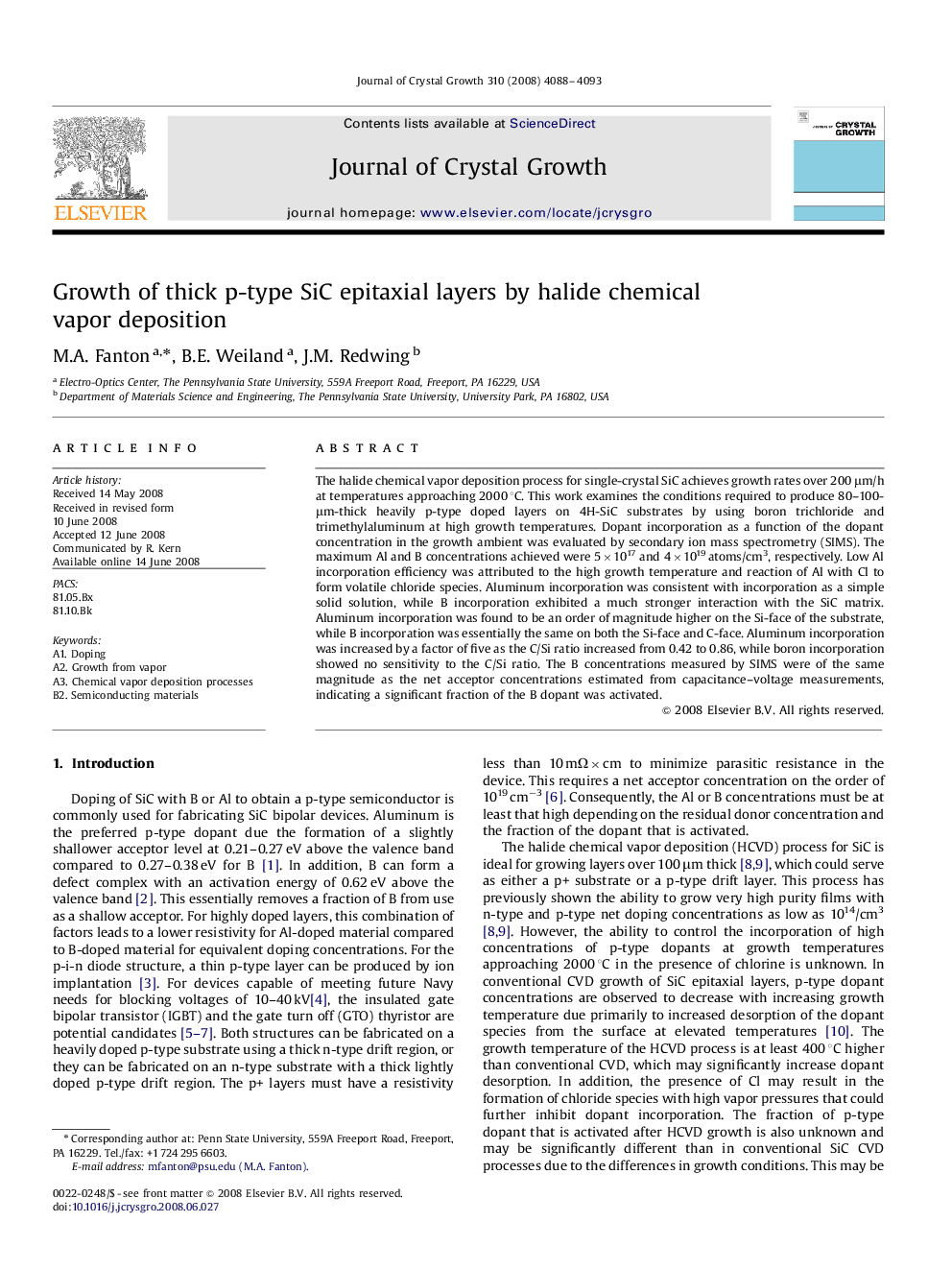| Article ID | Journal | Published Year | Pages | File Type |
|---|---|---|---|---|
| 1794782 | Journal of Crystal Growth | 2008 | 6 Pages |
Abstract
The halide chemical vapor deposition process for single-crystal SiC achieves growth rates over 200 μm/h at temperatures approaching 2000 °C. This work examines the conditions required to produce 80-100-μm-thick heavily p-type doped layers on 4H-SiC substrates by using boron trichloride and trimethylaluminum at high growth temperatures. Dopant incorporation as a function of the dopant concentration in the growth ambient was evaluated by secondary ion mass spectrometry (SIMS). The maximum Al and B concentrations achieved were 5Ã1017 and 4Ã1019 atoms/cm3, respectively. Low Al incorporation efficiency was attributed to the high growth temperature and reaction of Al with Cl to form volatile chloride species. Aluminum incorporation was consistent with incorporation as a simple solid solution, while B incorporation exhibited a much stronger interaction with the SiC matrix. Aluminum incorporation was found to be an order of magnitude higher on the Si-face of the substrate, while B incorporation was essentially the same on both the Si-face and C-face. Aluminum incorporation was increased by a factor of five as the C/Si ratio increased from 0.42 to 0.86, while boron incorporation showed no sensitivity to the C/Si ratio. The B concentrations measured by SIMS were of the same magnitude as the net acceptor concentrations estimated from capacitance-voltage measurements, indicating a significant fraction of the B dopant was activated.
Keywords
Related Topics
Physical Sciences and Engineering
Physics and Astronomy
Condensed Matter Physics
Authors
M.A. Fanton, B.E. Weiland, J.M. Redwing,
